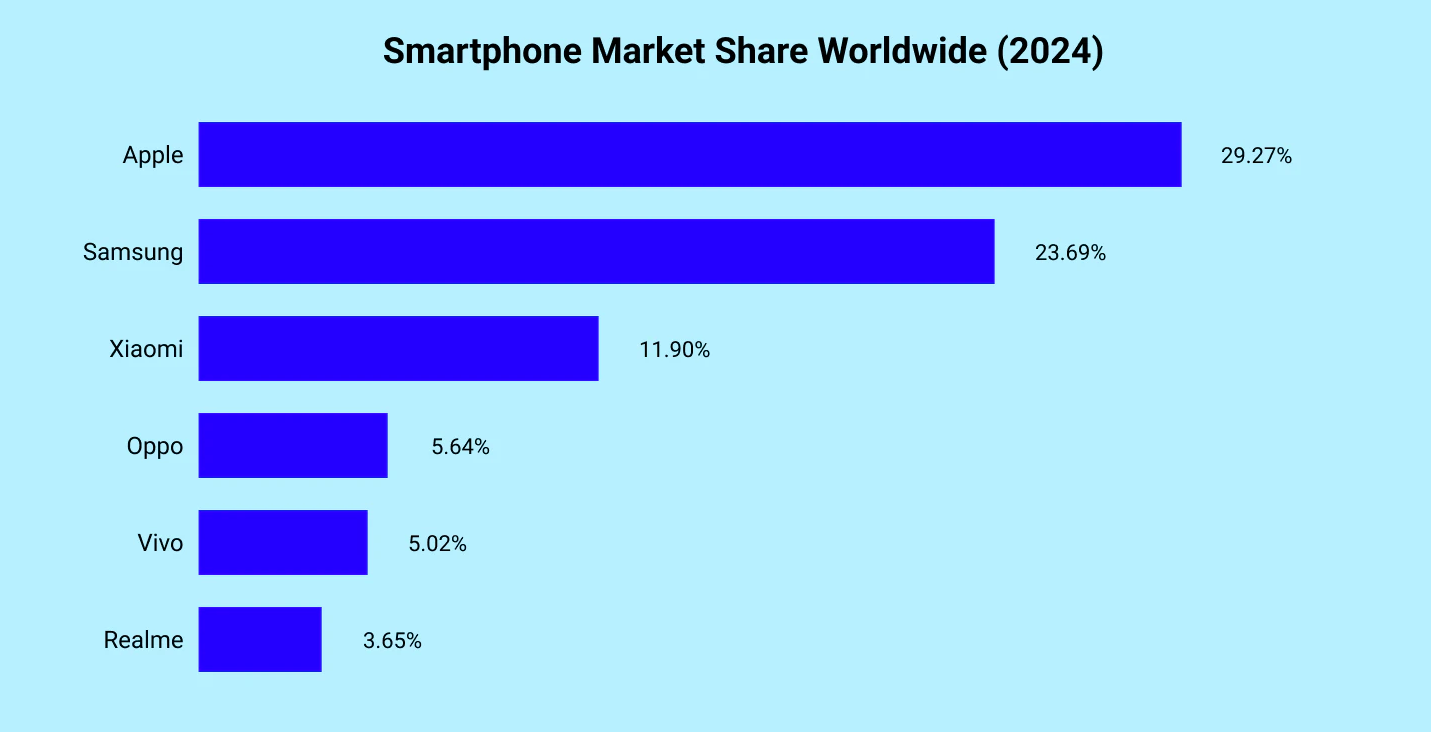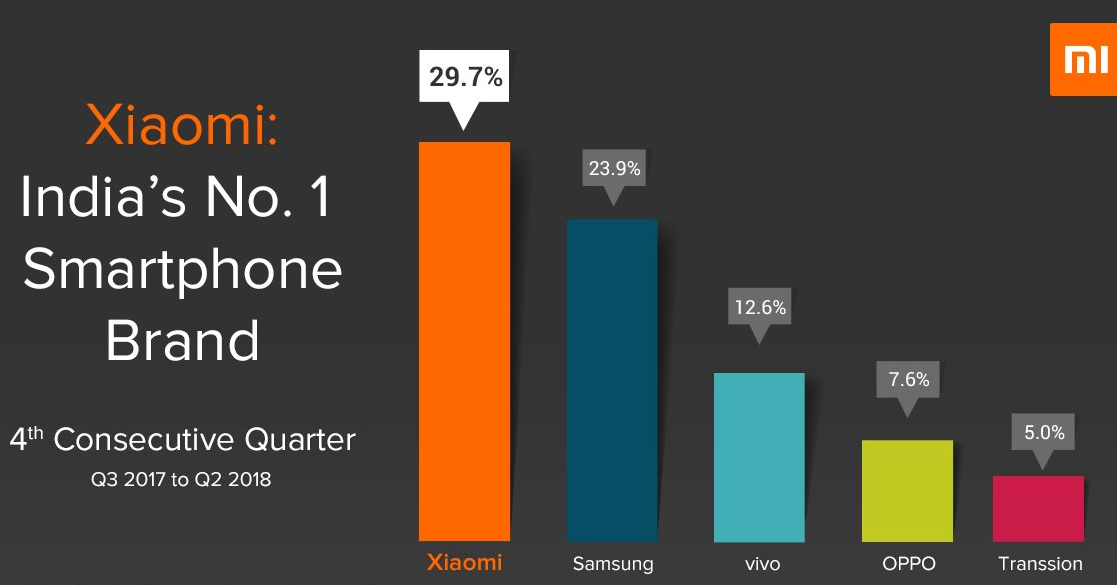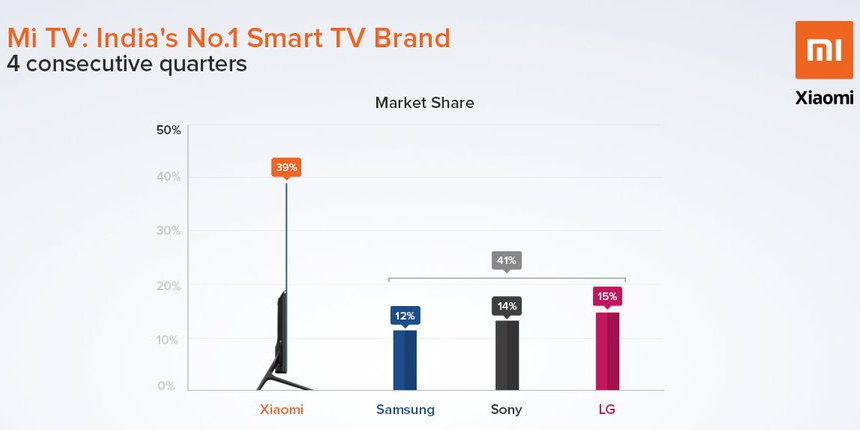Introduction
The emergence of Xiaomi was nothing short of a disruptive phenomenon. Breaking the myth that Chinese products are of cheap quality, Xiaomi emerged as the world’s second largest smartphone manufacturer, behind Samsung. Xiaomi has a market share of 12% worldwide, standing at 3rd place, behind Apple and Samsung.
In India, the third-largest smartphone market in the world, Xiaomi has been the No. 1 smartphone brand. It is said that every one out of three phones sold in India is a Xiaomi device.
But how did Xiaomi disrupt the market? How did it capture Indian consumers, one of the toughest nuts to crack?
Find out with booMetrics.


Origin
Xiaomi, officially known as Xiaomi Corporation, was founded in April 2010 by Lei Jun, a Chinese entrepreneur. Initially, Xiaomi operated as a software company, concentrating on developing MIUI, a custom firmware for Android devices. In August 2011, Xiaomi made waves with the launch of its first smartphone, the Xiaomi Mi 1, renowned for its top-tier specifications and competitive pricing.
Xiaomi entered the Indian market in July 2014, just three years after its inception, Xiaomi swiftly earned the title of “India’s No.1 smartphone brand”. The company initially directed its efforts towards online sales on Flipkart and Amazon India.

Back in 2014, only 6 percent of India’s market was online. Xiaomi’s strategy of relying solely on online sales and word-of-mouth promotion seemed irrational.
To gauge customer interest, Xiaomi engaged with consumers through its Xiaomi India Facebook page, quickly amassing 10,000 page likes. This organic growth sans advertisement validated their confidence in e-commerce channels. Xiaomi’s debut smartphone, the Mi3, sold out its entire inventory in a mere five seconds.
The Rise of Xiaomi in India
With two-thirds of India’s population still offline, Xiaomi India sought to tap into the offline market. In early 2017, the company opened its first Mi Home in Bengaluru’s Phoenix Market City Mall.
Just to establish their presence offline, Xiaomi launched the Redmi 4 from this store. Surprisingly, a crowd of nearly 10,000 eager customers lined up on launch day.
Subsequently, around 6,000 stores sprung up across the country, with many turning profitable within the initial five to six months.
Xiaomi started diversifying its product range beyond smartphones, introducing a plethora of consumer electronics and smart home devices in India. This strategic expansion aligned with the changing preferences and requirements of Indian consumers.

Mi TV secured the title of India’s No. 1 Smart TV Brand. Through offerings like smart TVs, fitness bands, earphones, and smart home appliances, Xiaomi established itself as a holistic lifestyle brand in the Indian market.
Know How!
Hunger marketing strategy
Xiaomi intentionally creates the shortage of supply on purpose, creating a buzz in the market and evoking the desire in customers to own a MI brand smartphone.
Xiaomi employed flash sales as a marketing strategy for its products. Consumers eagerly awaited the anticipated launches, often waiting for weeks. These flash sales not only generated buzz online but also effectively promoted the products.
Xiaomi products often sold out quickly. This scarcity further fueled anticipation and kept potential customers engaged, eagerly awaiting the next flash sale.
Participatory consumption
This is a very popular marketing strategy previously adopted by businesses like Ikea, Dell, Subway, TikTok and many more. Through this model, businesses engage with customers and create products of their choice.
Xiaomi would seek suggestions from fans to review the MIUI operating system. Every Friday, known as Orange Friday, Xiaomi would ship a new version of MIUI. Xiaomi’s relationship with its users became intimate, organic and dialogue-based. It successfully made the customers feel that they were an integral part of the product development phase.
Product differentiation
The phone’s product differentiation stood out for its success. For instance, in China the company had a beauty filter on its camera app. But in India, because fans were strongly opposed to the idea, the company didn’t bring the feature.
Similarly, Indian fans clamored for a radio frequency chip in the phone so that it could double as a remote control for the TV and other devices.
Pricing
The cornerstone of the brand’s product expansion strategy is its relentless focus on aggressive price reduction. By providing affordable alternatives to more expensive products without compromising on quality or features, this pricing approach aims to steadily gain market share.
As of 2020, Xiaomi’s smartphone prices span from as low as ₹5,000 to as high as ₹200,000.
Lessons
The 4P’s of Marketing – Product, Price, Place, and Promotion.
- Product Quality: Xiaomi’s products are not just another knock-off. The company focuses on providing high-quality products at affordable prices, which sets it apart from its competitors. Xiaomi’s phones have a robust case, high-quality screen, and a reasonable battery, making them more durable than cheaper alternatives.
- Pricing Strategy: Xiaomi’s pricing strategy is not just about selling cheaper phones. The company covers the cost of devices and makes money from selling content, similar to Amazon’s model. This strategy allows Xiaomi to offer high-quality products at lower prices while still generating revenue.
- Place: Xiaomi focuses on gaining strength at home before expanding into other markets. The company builds its strength in China, tests its ideas, and builds a loyal customer base locally before expanding into other markets.
- Promotion: Xiaomi actively uses social media to promote its products and engage with customers. The company encourages engineers to speak directly to consumers and use gathered feedback to refine software. This approach helps Xiaomi build a loyal customer base and improve its products based on user feedback.
- Product Diversity: In addition to smartphones, Xiaomi produces a curious mix of white goods, networking kit, and consumer electronics. This diversity helps Xiaomi hedge its revenue and expand its product offerings beyond smartphones.
- Great Marketing Goes a Long Way: Xiaomi’s marketing efforts are mostly pumped towards getting user engagement. The company creates, interacts with extensive online communities of fans, and holds special marketing campaigns and announces new products during Mi-fan Day every year. Xiaomi’s unique marketing approach has inspired loyalty among its customers, who are known to travel across China to attend new launches.
- You Don’t Need to Always Follow What Others Are Doing: Xiaomi’s stubborn insistence on keeping their phones non-waterproof, despite competitors’ swift leaps onto that bandwagon, is an example of the company sticking to its philosophy of keeping devices affordable. This approach has helped Xiaomi maintain its competitive edge in price-sensitive markets like India and China.
